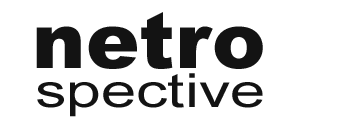For my sins, I used to be a teacher. Every day the challenge was to inspire and engage a bunch of minds, all of whom had different starting points, different aptitudes, and wildly differing attention spans. There’s some interesting research coming out of Stanford on attention and cognition in the classroom which I’d like to share with you. I think the teacher’s dilemma in the classroom reflects well our challenge as customer experience architects. We are marketing in an age of distraction.
Our task used to be easy: Interrupt someone’s attention for a short while to get our point across. We used basic psychology to create a persuasive message, and data to find the right people to get the message to.
Educationalists would recognise this as the “managed attention” approach. Get everyone together, reduce all external influences and distractions and burn the point into the memory of the recipient in one or two hits.
However, over the last few decades, the centre of gravity in education has moved to a student centric model, using techniques to tailor learning experiences to the needs and learning speeds of the individual. Information has been “chunked” into smaller units for consumption in flexible timescales, across multiple media.
Likewise, marketing has transformed from a mass model, to a customer-centric market of one. We can no longer rely on managing our customer’s attention through interruptive techniques. We have to chunk our messages up into small packages for our customers to find wherever they are in their media journey – on or off-line. We need to make sure they make the connections which form the basis of our narrative throughout their journey. We can only do this by making sure that the DNA strands of our brand are strong as they run through our messages and the context they are found in.
N. Katherine Hayles, a professor emerita of English at the University of California at Los Angeles has observed that in a media rich environment, “students are getting better at making conceptual connections across a wide variety of domains”. She describes how this behaviour of skimming and surfing through a world of multimedia generates a condition which she calls “hyper attention”
"One of the basic tenets of good teaching is that you have to start where the students are," Hayles says. "And once you find out where they are, a good teacher can lead them almost anywhere. Students today don't start in deep attention. They start in hyper attention.”
When I look at our marketing arc – the map we at Proctors use to construct our customer experiences – I see an entry point where we welcome visitors from the media meta-verse into our universe of influence. This is where we start our lead nurturing process with a program of in-bound marketing content and touch-points.
Our challenge as marketers in this age of distraction is to make sure that at that entry point we can identify where they are in their decision process and how we sit in their perception in order to guide them from hyper attention to deep attention and consideration.

No comments:
Post a Comment